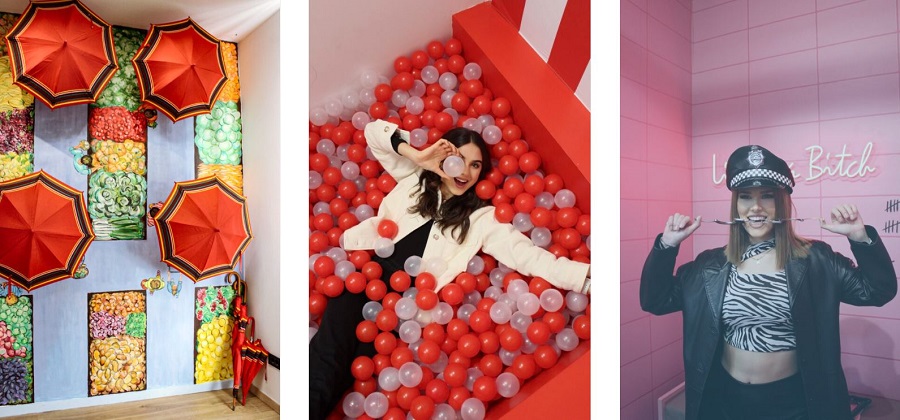Museum of Illusions Awarded Franchise Brand Leader Award 2022
May the 11th, 2023 - The much loved and wildly popular Museum of Illusions, which attracts large numbers each year here in Zagreb, has been awarded the Franchise Brand Leader Award 2022.
As Poslovni Dnevnik writes, approximately 220 franchises are currently active across the Republic of Croatia in various industries, and in the last three and a half years, there has been a noticeable growth of domestic franchises. Among the names on that ever-expanding list is the Museum of Illusions, and it has been declared the winner of the Franchise of the Year 2022 Award.
The Franchise Brand Leader Award 2022 was launched last year by the Croatian Association for Franchise Business-FIP and Darko Bukovic, the director of the online radio Poslovni FM/Business FM.
The fact that there is a lot of room for the export of various kinds of Croatian franchises has been well and truly showcased by the examples of last year's awarded car rental companies Carwiz International and Surf 'n' Fries, as well as this year's main winner of the award - the Museum of Illusions.
In addition to the Franchise of the Year 2022 Award, the Museum of Illusions also received the award for the best Croatian export franchise and for the biggest export breakthrough. This particular unique museum franchise will represent the Republic of Croatia at the franchise fair in Frankfurt and will also compete for the "2023 European Franchise Award" at the end of September this year in the Belgian capital of Brussels.
Since its beginnings back in 2015, the Museum of Illusions has expanded from the City of Zagreb to more than 40 locations in 25 countries around the world. According to the plan, the office and museum will open this year in Atlanta, as well as in several other cities across the pond in the United States of America.
For more, make sure to check out our dedicated news section.
Zagreb Museums: Innovative, Unique and Going Global
April 3, 2023 - Did you know that the world's most franchised museum was born in Zagreb? A look at the unique and innovative world of Zagreb museums.
Someone told me a few years ago that Zagreb has the most museums per capita in the world. Whether or not that is true, there do so seem to be a LOT of them, some of them very successful, and some of them very peculiar. It is a mix that adds a level of attraction to the visitor, while putting Zagreb on the cultural map of the world.
Arguably the most innovative and best-known of Zagreb's museums is not the one that has travelled the globe more than any other in museum franchise history.
Ask most guidebooks what there is to see and do in Zagreb, and the response will undoubtedly include a visit to the Museum of Broken Relationships.
Located in the historic Upper Town in its permanent home since 2010, the Museum of Broken Relationships was the brainchild of a Croatian couple who had just finished a relationship and were dividing up their belongings. Olinka Zvisitica and Drazen Grubisic decided that it would be cool to have a place where people could showcase momentoes of their failed relationships, to help them move on, as well as to acknowledge to the world that this love had existed.
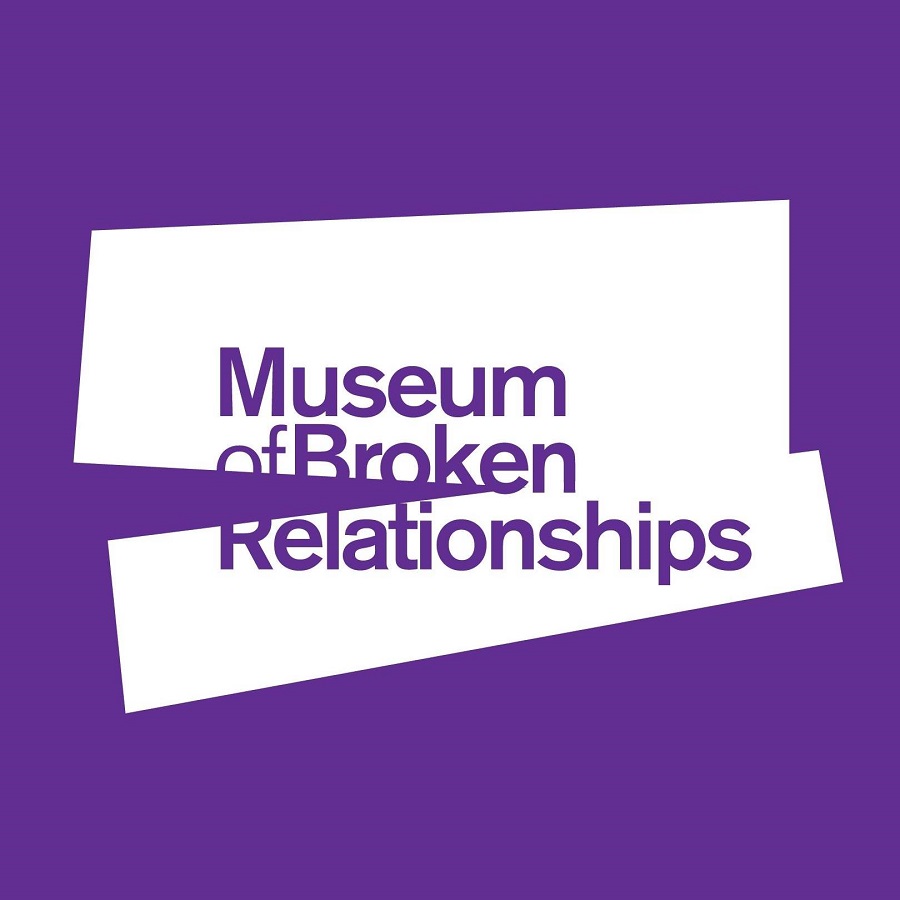
First exhibited in 2006 with contributions from friends, the concept was an absolute hit, and today the museum houses more than 4,000 exhibits that have been donated, with around 70 on display at any one time. A caption explaining the story and the relevance of the item gives a poignancy to every exhibit. Exhibits range from a prosthetic leg to 30-year-old scabs in a petri dish, and pretty much everything in between.
The exhibition has toured the globe, and in 2016, the Museum of Broken Relationships Los Angeles opened in California, the first time that a Zagreb museum appeared elsewhere. But it was not long before a new kid on the block would truly put Zagreb museums on the world stage.

In 2015, two Croatian enthusiasts looking to offer an interactive edutainment product of photogenic exhibits and rooms of illusion opened a new concept in the Croatian capital, called the Museum of Illusions. I have no idea what the expectations were of the two founders, Roko Zivkovic and Tomislav Pamukovic, but the 8 years that have followed have been truly breathtaking. Already with locations in places such as Toronto, New York, Dubai, Chicago, Athens, Vienna, Paris, Madrid and Istanbul, last week, the 41st and 42nd Museum of Illusions opened in Austin and Scottsdale. The Museum of Illusions is now the largest chain of private museums in the world.
Which of the innovative Zagreb museums will be next, if any? Well, there are certainly some unusual ones to take in on your next visit to the city. Here are some of the more unusual museums which have not had that much global acclaim... yet.
Museum of Hangovers - I first came across this very centrally-located museum feeling a little fragile after a heavy night one morning on the way to a meeting. A Zagreb original, founder Rino Dubokovic introduces it best:
"After having a blast at a Beer fest, my friends and I went for one more drink to a bar next to where this Museum is today. As we were talking about funny stuff that was mostly drunk stories, my friend told us a story about how he recently woke up with a bike pedal in his pocket. Apparently, his friend was driving his bike when he drunkenly smashed into a pier, broke a pedal and fell down. As he was telling his story I thought of a great idea - a place or some sort of collection where all these objects from drunk stories (like this pedal) would be exposed together with their stories. And that is when the idea of Hangovers museum was born and came to life 6 months later."
Tresnjevka Neighbourhood Museum - Not so well known, but a vey cool concept is the Tresnjevka Neighbourhood Museum, a great initiative to celebrate this very cool Zagreb neighbourhood.
"THE TREŠNJEVKA NEIGHBORHOOD MUSEUM is a project that we have run since 2018, with the goal of establishing a hybrid neighborhood institution where “its engine and purpose is the community, and the coexistence of men with their environment its foundation.” It is inspired by similar institutions one finds in poor working-class areas worldwide, in which the official, national, and imperialist white culture has bypassed oppressed communities and their needs. In the post-socialist context, over the past three decades, historical narratives as well as museum exhibition programs have systematically evaded themes related to workers’ struggle, socialist revolution, and building of socialist society. Since Trešnjevka is known for its rich working-class history, we have started an initiative for revalorization and historization of its heritage, in cooperation with the local community.
"Through THE TREŠNJEVKA NEIGHBORHOOD MUSEUM we work on setting up a neighborhood museum based on democratic principles of representation and mediation of its history, which will be open to all residents. We are building the future museum together with the community, through field research of Trešnjevka and continuous growth of its virtual collection, as well as through public arts and culture programs that focus on the local history and activate neighborhood’s residents."
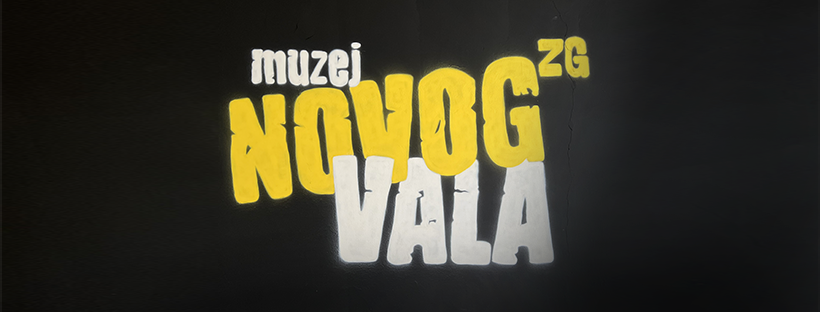
Museum of the New Wave - Museums these days offer interaction, besides the art displays - meet the Museum of the New Wave. The museum opened its door for the very first time in November 2022. Here, you can admire a synergy of 80s art in Croatia: from musicians, journalists, photographers, actors and directors, to numerous other artists. For every rock music lover, or ultimate 80s fan, the museum is a must-visit when in Zagreb. It will take you through a period when rock music, tight ripped jeans, big hair, leather jackets, and glasses were a must in every wardrobe.
Zagreb Cannabis Museum - Looking to relax on your next visit to Zagreb? There is a museum for that...
TripAdvisor puts the Zagreb Cannabis Museum on the global stage in its niche: "The most modern Cannabis Museum in the world is situated in Zagreb on 250sqm inner and 150sqm outer part. Rich programs, history overview, modern design, specialty for growers."
Museum of Selfies and Memories - Not a Zagreb original after being imported in from the States, but a fun one for the contemporary visitor. Museum of Selfie and Memories Zagreb is the new place to be! It provides you with unlimited fun, massive joy and adorable pictures of unforgettable moments spent with your loved ones. It is a place where you will wake up the child in you and get an opportunity to take memorable selfies. Take a break from reality, get out of your usual routine, visit Museum of Selfie and Memories and make amazing photos. Peek into your imagination, have fun and unforgettable experience!
They never had museums like this when I was growing up... For a look at more museums in Zagreb, including the more traditional, click here.
Museum of Illusions Moving Headquarters to Atlanta, USA
July the 11th, 2022 - The famous Zagreb attraction which draws crowds from all over each and every year, the Museum of Illusions, is set to move its headquarters across the pond to the USA.
As Poslovni Dnevnik/Ana Blaskovic writes, the City of Zagreb's much loved Museum of Illusions, a Croatian creation that received an additional spring in its step in terms of global expansion with the entry of the venture capital fund Invera Equity Partners, is moving its headquarters across the Atlantic Ocean to the USA.
Although in the business of selling (optical) illusions according to a successful museum-style formula, according to which their network today consists of 37 museums across the world in 21 countries, business logic demands its own set of rules. They want to be perceived as a company and not merely a museum, which is why they're opening an office in Atlanta in order to achieve better valuations once the time comes for the exit of the aforementioned capital fund and the eventual payment of returns to its investors.
"We belong to the entertainment industry, the ''mid-way'' segment of the market that refers to attractions lasting up to two hours for which visitors are willing to pay between 20 and 70 US dollars, it's a concept quite similar to that of Madame Tussauds,'' illustrated Invera partner Slaven Kordic. Invera Equity Partners is otherwise currently the only venture capital fund present here on the Croatian market that sought its lucrative investment in the entertainment industry segment.
"Croatia could have many more such investments, there are homegrown ideas with similar potential when it comes to spreading to Western Europe and all the way over to the USA. We have five more target companies with whom we're talking about potential investment," Kordic revealed. How much they've actually invested in Metamorfosis, the company behind the project of the Museum of Illusions, since July 2021 - he didn't discuss.
It was the completion of that particular investment, which saw the capital fund acquire a majority share of 65 percent, that the venture capital fund industry recognised as the best private equity investment of the past year. It's worth mentioning that the competition was quite fierce because Provectus' investments in Keindl Sport, Adria Dental Group and the Aiva polyclinic, Prosperus' acquisition of Neos and Rohatyn's sale of Pet Network International, which includes Pet Centre, all competed for the title.
Despite the move of the Museum of Illusions' headquarters across the pond to Atlanta, the service centre, i.e. the "brain" of the operation, will remain at home in Croatia.
"Zagreb will be a global hub where people from all over the world will work with the ''know how'' of running a museum, creating exhibits and marketing, while the management functions will be moved to the USA," said Kordic. The head of the company since October has been American Jonathan Benjamin, a renowned manager from the USA who honed his experience in the development of the business of Altitude Trampoline Parks and Briggo Coffee, who, alongside the team in Atlanta, is focused on making strong step forward for the Museum of Illusions on the American market.
Unlike, for example, entrepreneur Mate Rimac, who fiercely branded all segments of his business (despite all expectations and bets) here at home in Croatia, where he was supported by strategic investors, Kordic says that the circumstances of venture capital funds are somewhat different, as there is a huge emphasis on ensuring eventual financial returns for investors.
"It's less important where they're from and who runs the business, the key is that the majority of employees will remain here in Croatia. We want to achieve a situation in which the company is perceived as American in order to achieve better returns one day when it comes to those payouts,'' explained Kordic. The perception of an "American" company in practice is very specific, the return could reach 15x EBITDA, while a Croatian company would have to count on far less than that.
The investment time horizon of Invera EP is five years or less, and this is the period in which the fund wants to transform the business by taking it to a higher and more secure level. Their ambitions are great, but so is the potential, according to investors, so the initial projections for the eventual investor exit have been corrected to a massive "200 million euros plus".
"We've already received two offers for sale from Europe, but we rejected them because we believe that there's a lot of great potential with investments and development,'' said Kordic, adding that they want to achieve this with strong names in management, among which are Teo Sirola at the head and Ivan Stipancic in charge of finances. Co-founder Roko Zivkovic, without whom the idea of the Museum of Illusions and all of its accompanying optical illusions and puzzles around the world wouldn't even exist, is still within the company as an advisor to the Management Board.
Croatian wisdom
The largest investors in the fund are the European Investment Fund with 30 million euros, the European Bank for Reconstruction and Development with 10 million euros, and three domestic pension funds, Raiffeisen, Erste and PBZ CO, cumulatively supporting it with 14.5 million euros. Among the investors is also the Krsko Nuclear Power Plant Decommissioning Fund with 4.5 million euros, while partners Slaven Kordic and Kemal Sikiric and their employees invested another 1.5 million euros.
Receiving the award for the best private investment of the year, Roko Zivkovic said on Wednesday in Zagreb that when they started the Museum of Illusions project, they never dreamed that such an expansion of a project made entirely in Croatia could happen, pointing out that in addition to the 37 current locations of the museum around the world, another 12 locations are currently under construction.
For more, check out Made in Croatia.
Zagreb in 24 Hours: Cruising Through the Capital
28 April 2022 - Many people associate Croatian tourism with its famous coastline and sunny beaches. But the nation’s capital is an underrated gem. Here, I show you the best way to visit Zagreb in 24 hours.
Zagreb is the capital and the largest city of Croatia, with a rich history dating back to Roman times. Described by locals as a "big town disguised as a small city", Zagreb is a mix of Western Balkan and central European culture with laid-back, youth-led rhythm. Walking down the promenades, visiting the outdoor market, and drinking coffee in its vibrant settings, this 24-hour itinerary will have you feeling like a local in no time. From historic locations to museums to a bar crawl, everything covered is within the centre of Zagreb, at most a short tram ride away.
10.00 a.m-13.00 p.m.
Get a good start to the day by walking around the centre of Zagreb, where you’re going to want to pass through some of the iconic walking spots like Tkalčićeva street, where you can also stop for a quick coffee or drink at one of its many open cafes.
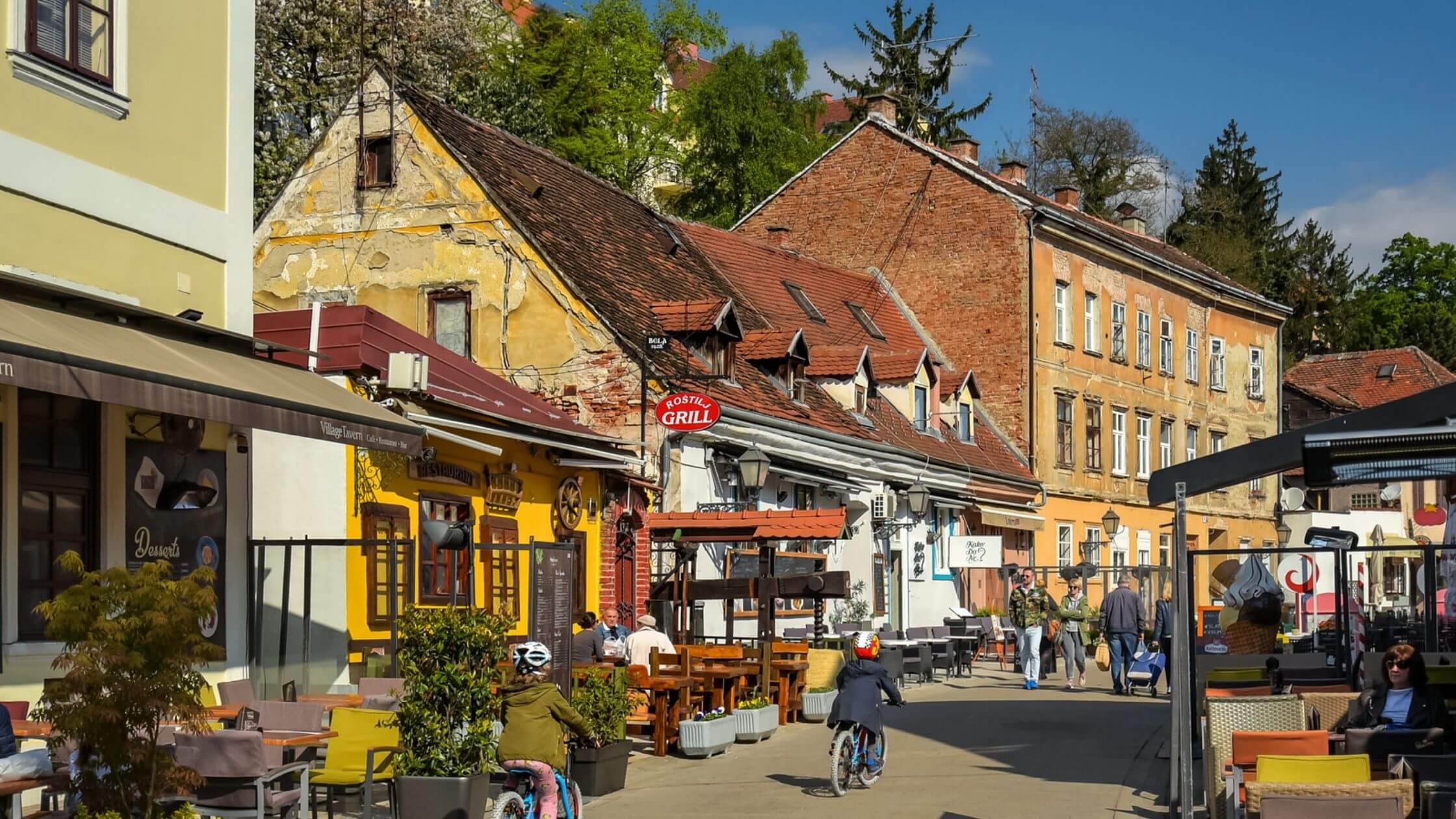
Image: Jorge Franganillo/Flickr
If you find yourself hungry right away, stop for breakfast or brunch at the nearby Otto & Frank. Definitely go for their signature dish, the Zagreb Breakfast - Zagreb’s answer to a traditional breakfast dish complete with toasted bread, cottage cheese, and crispy poached eggs. Their menu contains other brunch staples from oatmeal to French toast, many of which are veggie.

Image: @otto_frank_bar/Instagram
Alternatively, go for a coffee at Mala Kavana, a coffee shop/brunch place overlooking the Josip Jelačić main square. Zagreb is home to its own coffee culture - sitting at a vibrant open space with a strong coffee and a friend is part of the ZG lifestyle. And for this packed day, I have planned for you, you're gonna want to fuel up on caffeine.
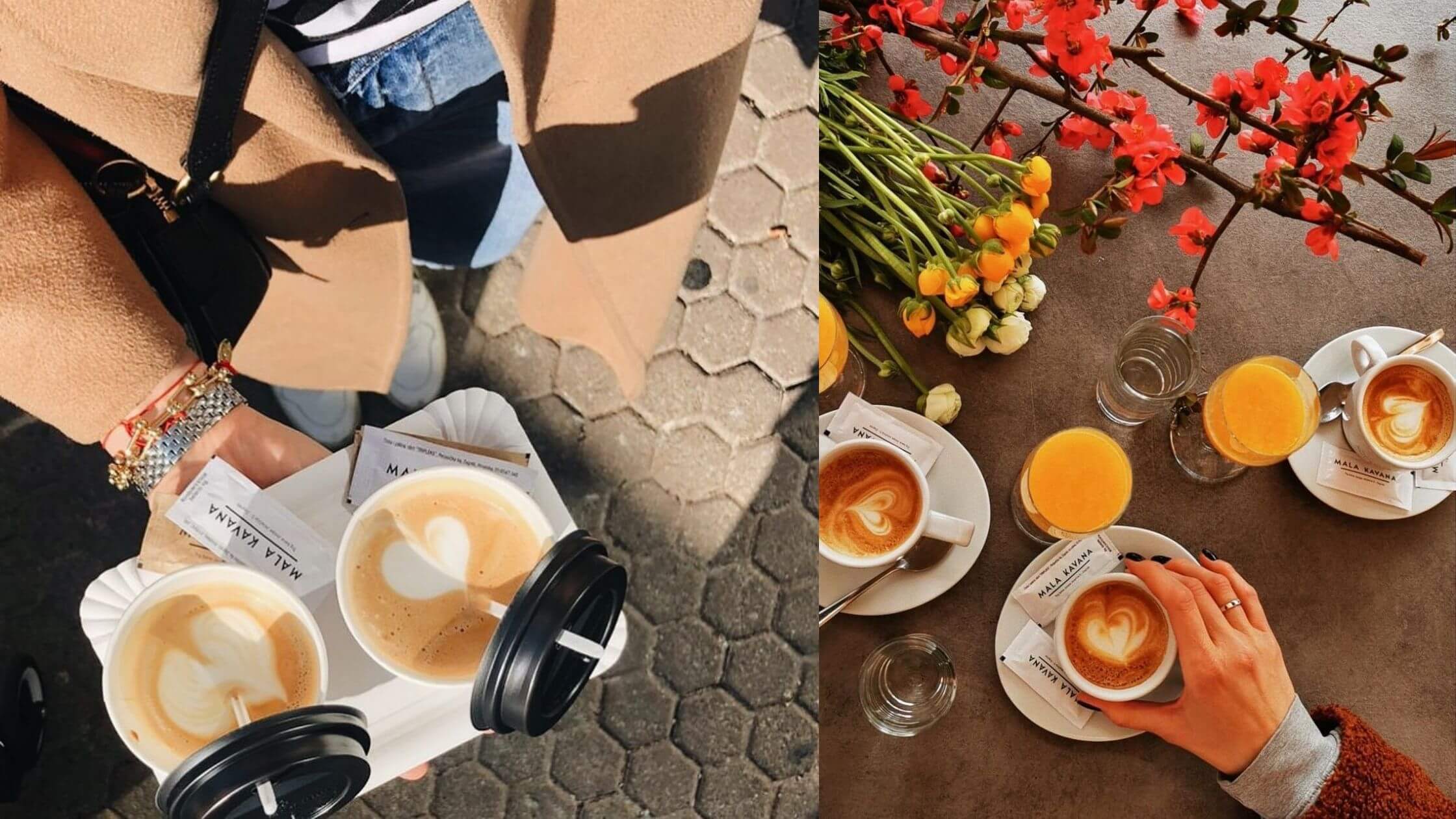
Image: Mala Kavana/Facebook
And if you prefer to eat on the go, quickly grab a pastry from one of Zagreb’s bakery chains such as Dubravica or Dinara - the nearest in the centre being in Dolac, from which you may detour towards the end of Tkalčićeva. An iconic place of Zagreb culture, the open-air farmer’s market is where traders from all over Croatia sell their locally grown produce, from fresh fruit and vegetables to different types of cheese. The market also has a butchery and fish market, in addition to pasta vendors, gift shops, and flower stalls.
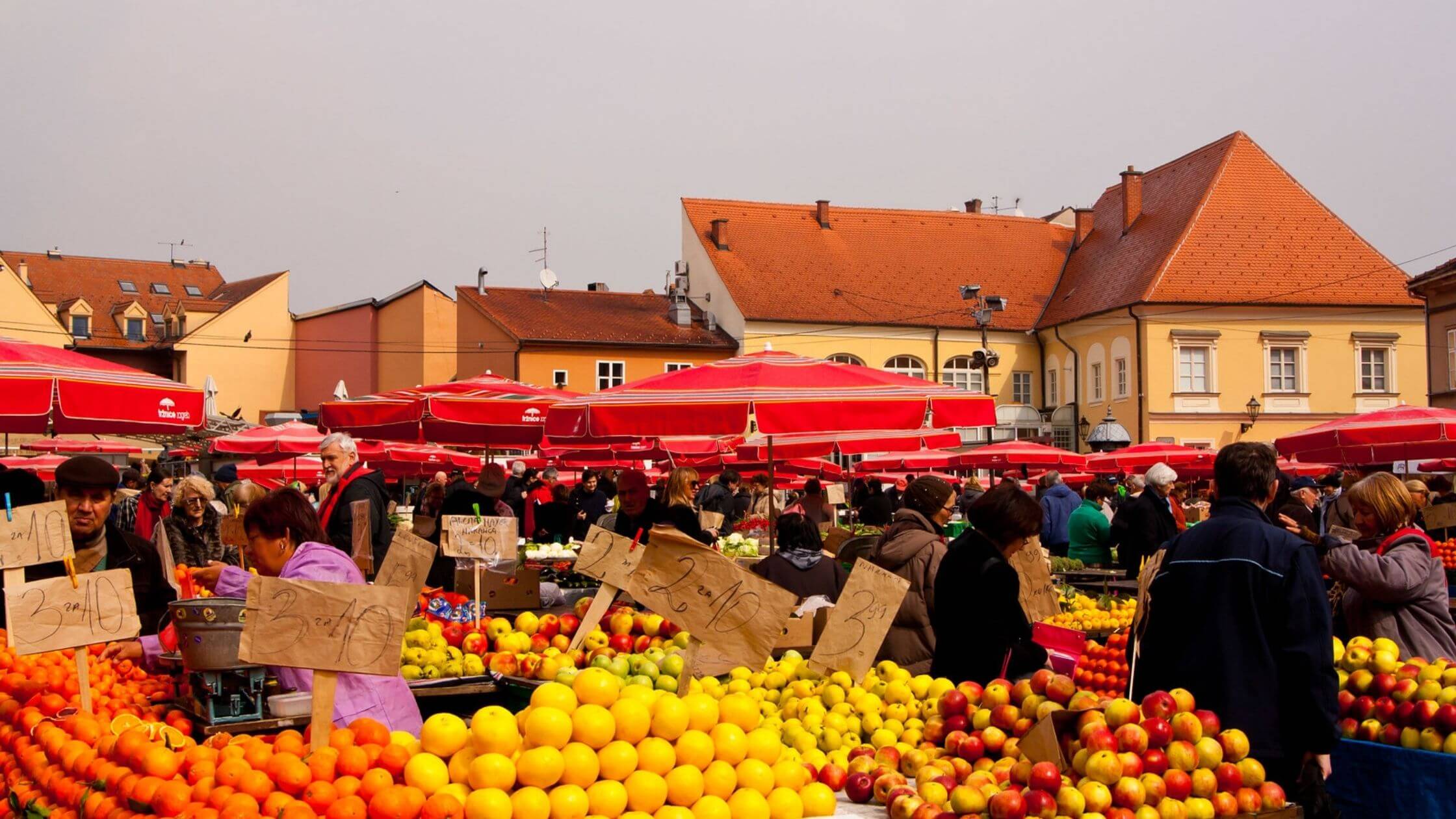
Image: Jerome Rondeau/Flickr
13.00-15.00 p.m.
You definitely will want to hit one of Zagreb’s museums, whether it’s one of the art galleries like Klovićevi dvori, or the more one of a kind ones, like the Museum of Naive Art, the Museum of Broken Relationships, or the Zagreb 80s Museum, all within walking distance of the upper town. Or, the quirky Museum of Illusions in Ilica or the Chocolate Museum in Varšavska street (near the Cvjetni square). The appeal of Zagreb museums is not only its diverse range and creative design, but also its prices and accessibility. Tickets can be bought upon entry, and are usually at an average price of 50kn per adult.
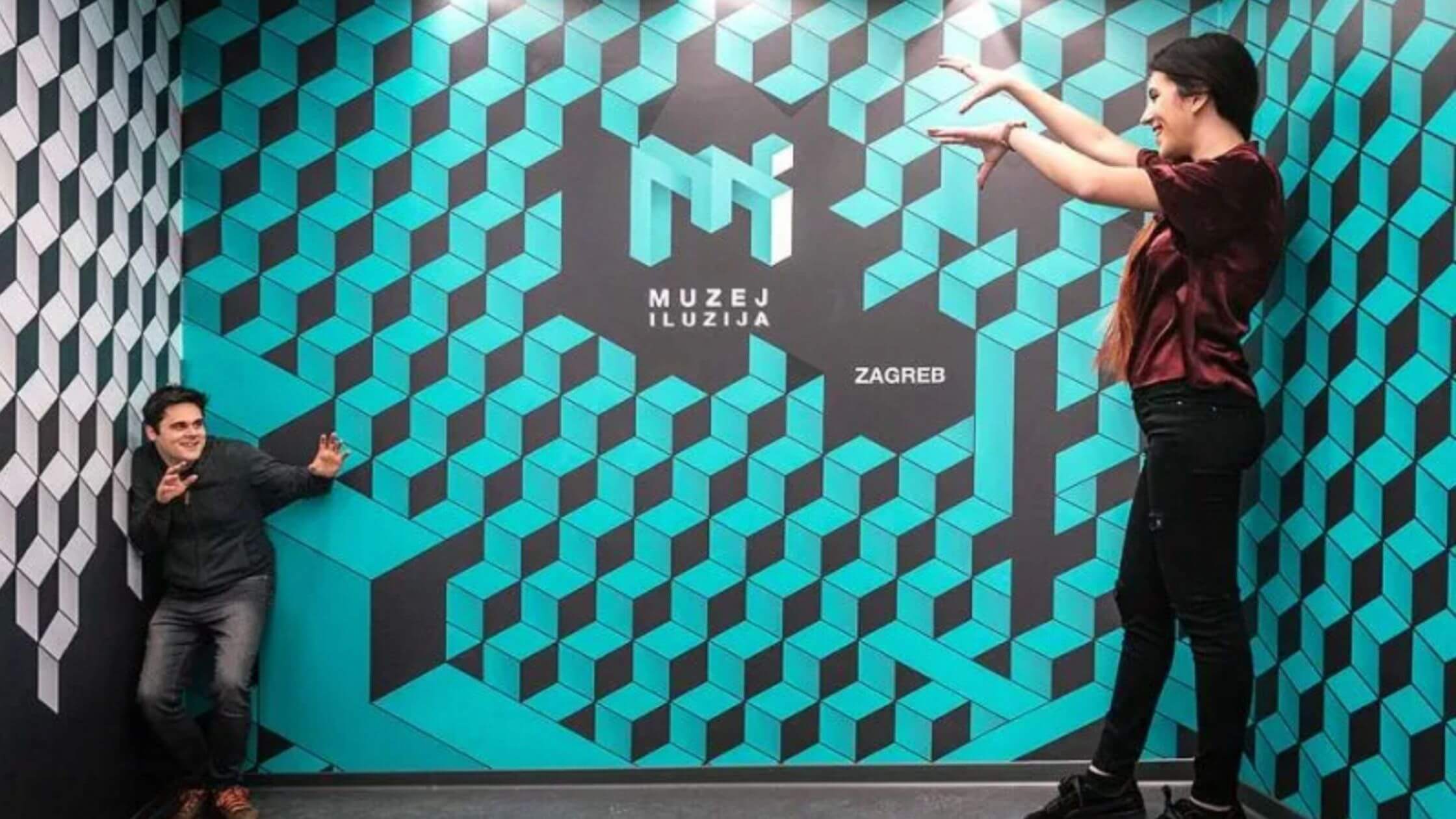
Image: muzejiluzija.com
15.00-17.00 p.m.
From the upper town, head from one of the former museums to some of Zagreb’s historic landmarks, from St. Mark’s Church, to the Strossmayer Promenade, the idyllic walking space of the Zagreb upper town complete with a panoramic view of the city, and the location of the historic Grič cannon and the world’s shortest funicular - Zagreb’s first and oldest means of public transport. Connecting Strossmayer to Tomićeva street, this short and sometimes even deemed "pointless" ride is nonetheless a must when visiting Zagreb. If heading out from the Museum of Illusions or Chocolate Museum, take the funicular upwards from Tomićeva to Strossmayer.
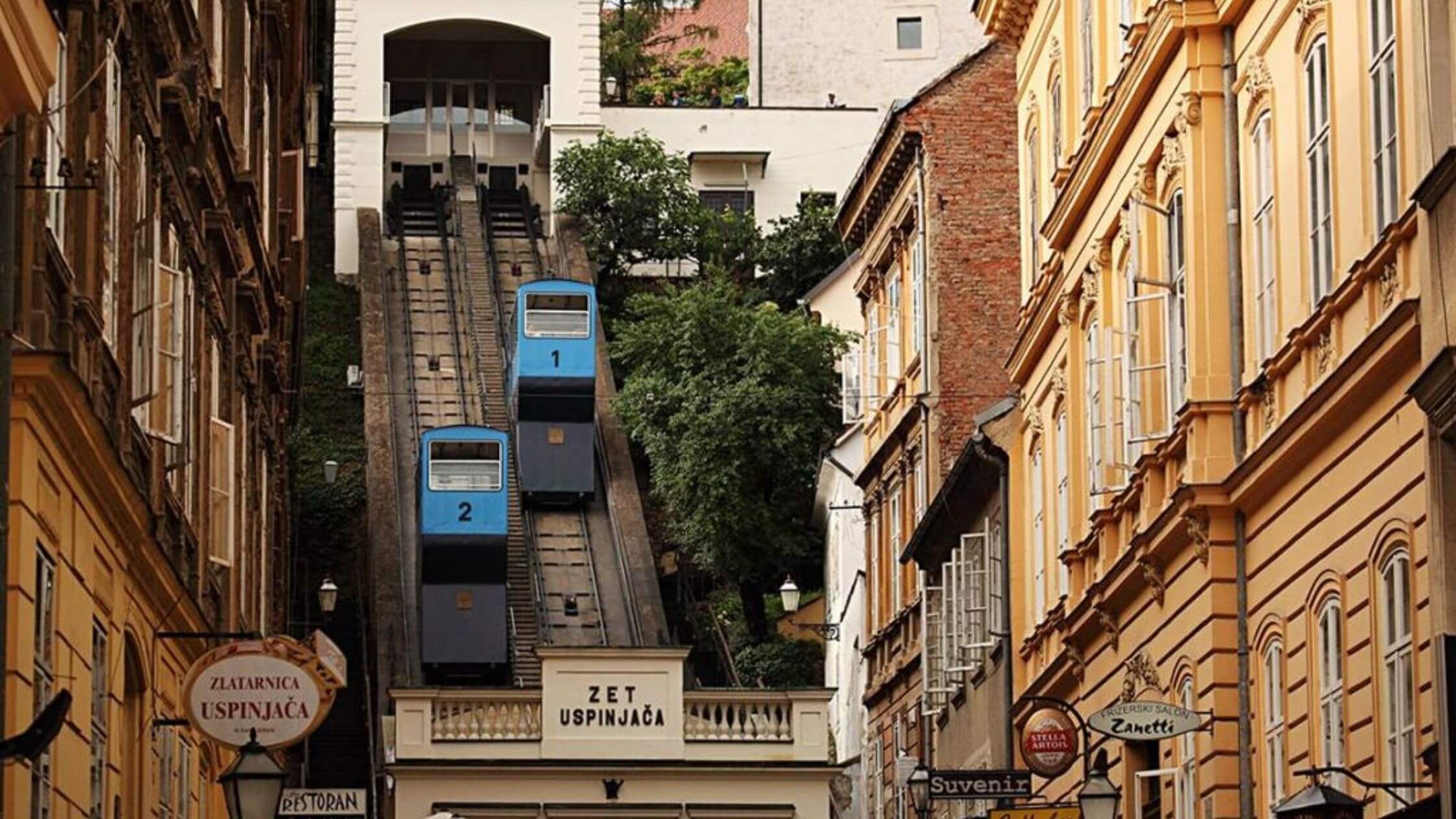
Image: inavukic
But regardless of which route you take, by now you'll want a break from all that walking, and what better way to do so than to stop for some sweet delicacies. Right beside the funicular end at Tomićeva is Vincek, the famous Zagreb cake shop, or rather its small outdoor branch known as Vis a Vis. Their kremšnita (cream pie) is a Zagreb favourite, and definitely one to savour in the outdoor setting, next to the carrot cake or triple chocolate brownie. What’s more, all their pastries are gluten-free, meaning those with allergies do not have to miss out.
 Image: Gilbertt G/Tripadvisor
Image: Gilbertt G/Tripadvisor
18.00-20.00 p.m
As the sun sets, head down to Zrinjevac park, a popular hanging spot to just sit in the grass and enjoy the atmosphere. Stop at the nearby Studenac grocery shop for some drinks or snacks, and chill out in the park. If there is an event happening, such as Cest is dBest or the Food and Film Festival, enjoy the music, performances, food and drink, and souvenirs.
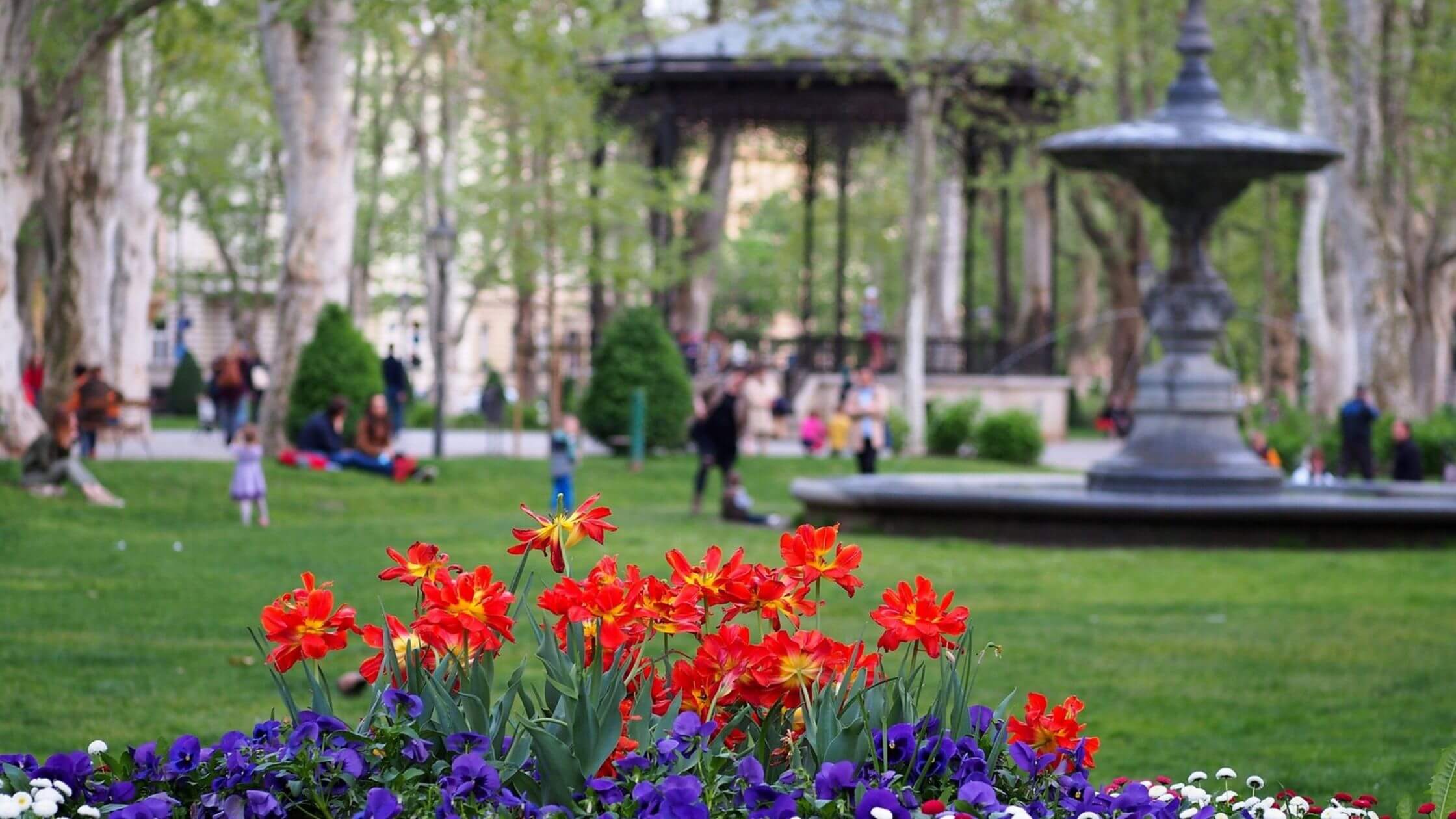
Image: e r g a s/Flickr
Otherwise, just use the hours to rest and take in the scenes. Walk around the park and go into the other nearby ones like the Josip Juraj Strossmayer park or the one at Kralj Tomislav square.
20.00-23.00 p.m.
If you're after a night out at the club, know that the Croatian way is to go in late hours. Which leaves plenty of time for a bar crawl to get your energy going for a long night ahead! Zagreb has a rich nightlife scene that has only continued to grow in recent years, and no matter what you're into, there is something for everyone. On the main square you have the popular bar and club Johann Franck. Going in towards Bogovićeva street, there’s Bulldog, and in Ilica, the stunning Swanky Monkey Garden, with its chill garden terrace vibe and excellent cocktails. And in the summer, head on further down to Tuskanac for the Pop Up Summer garden. For more info on what to do in Zagreb during the summer season, check out our guide covering festivals and other events in Zagreb that are either cheap or totally free.

Image: Swanky Monkey Garden/Facebook
Now, if you identify more with counterculture, a bar crawl of Zagreb’s range of alternative pubs is the way to go. Starting on Preradovićeva street, you have Alcatraz, the bar/nightclub that has earned itself a cult following thanks to its regular lineup of cheap drinks and rock tunes.
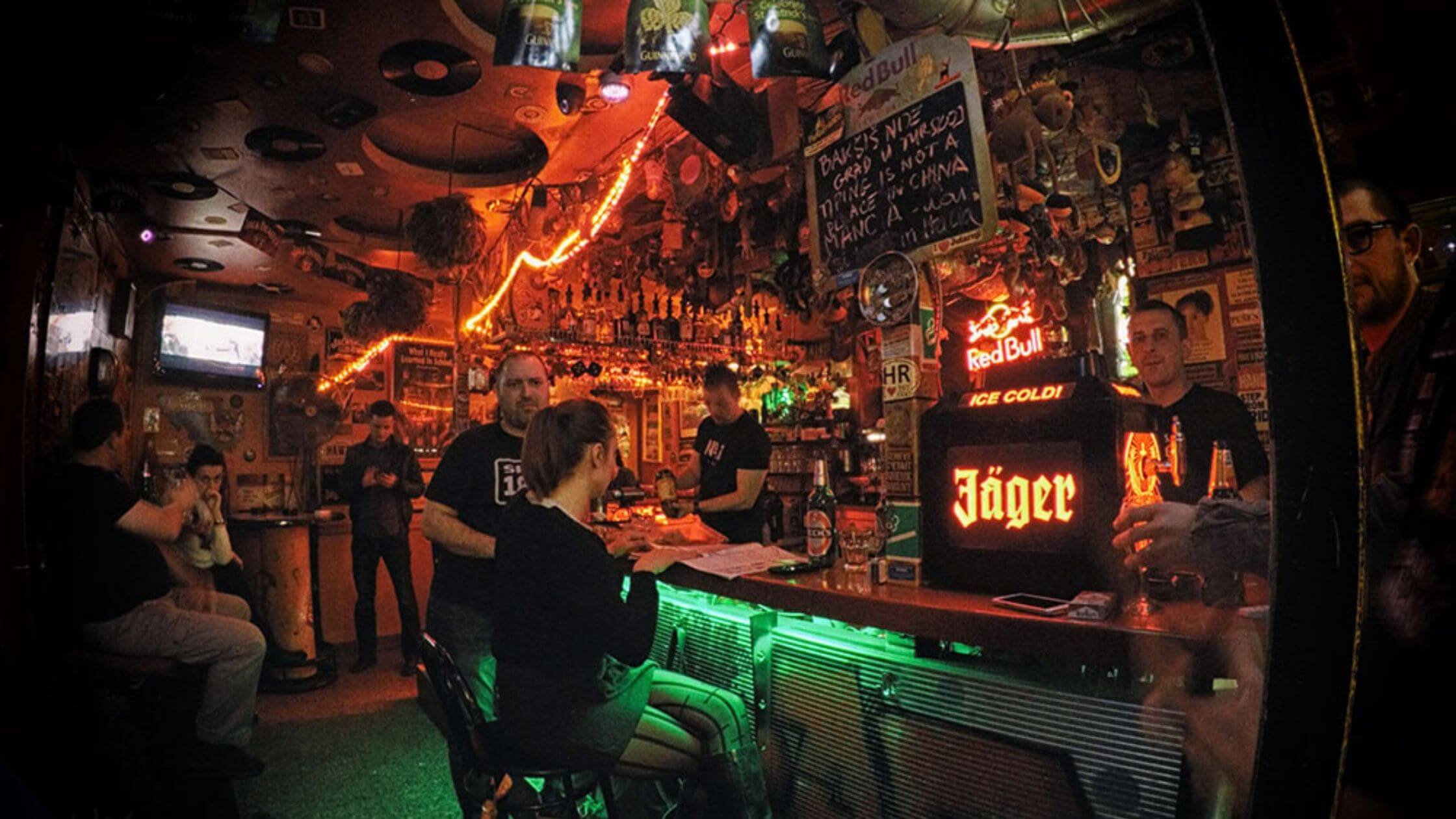
Image Credit: Neven Vukovic/CityPal
Nearby there’s Rock star, fully adorned on every wall with rock memorabilia, and just 9 minutes away is The Beertija, the rock-themed outdoor beer garden and nightclub with its long menu list of top-quality beers.
23.00 p.m-early hours
Now that it's time to hit the clubs, there’s the trendy Opera on Petrinjska, known as one of Zagreb’s top clubs with the best events and party atmosphere, attracting large numbers of visitiors in the spacious interior from late night till the early morning hours.
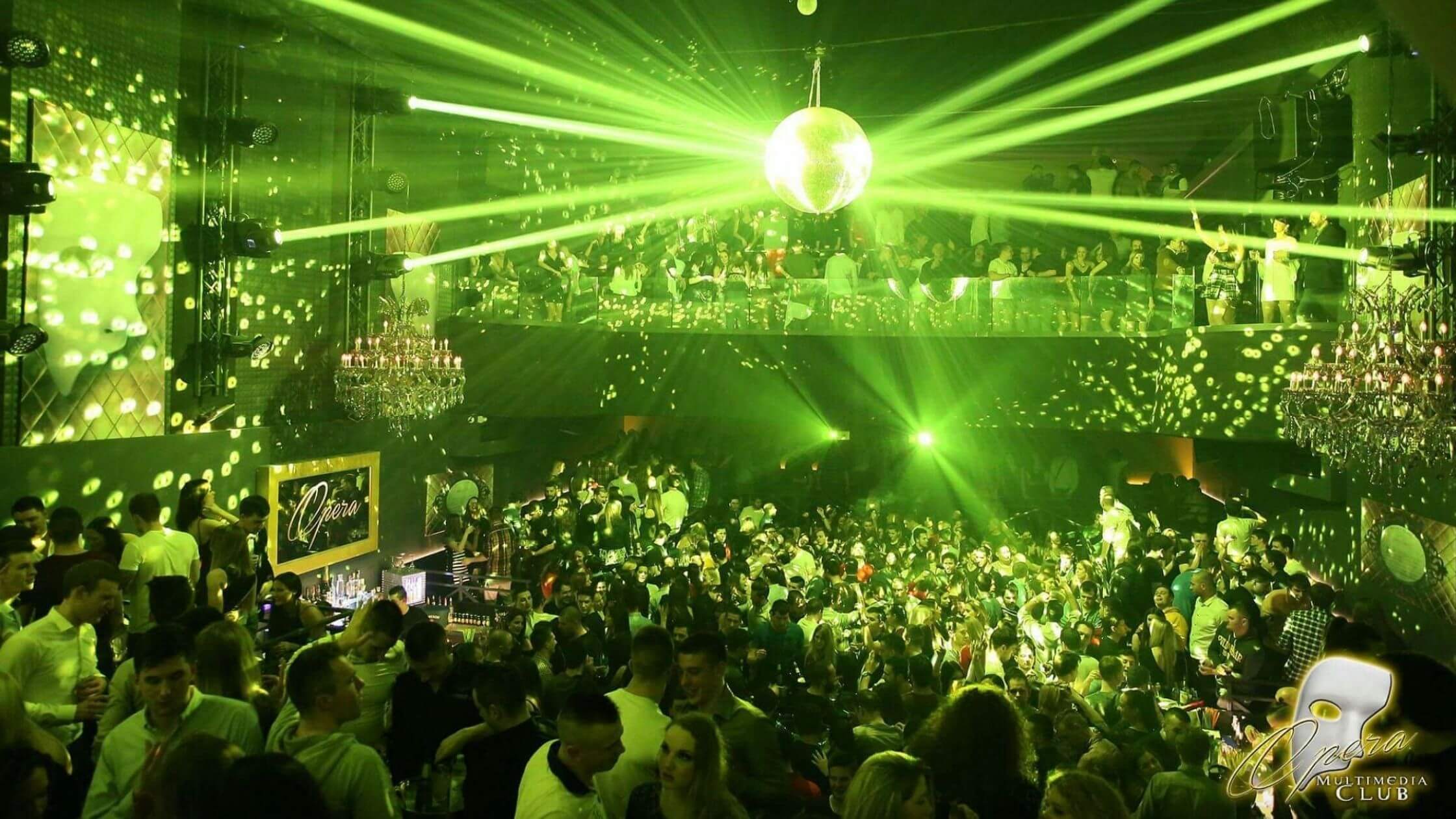 Image: Pjerino B/Tripadvisor
Image: Pjerino B/Tripadvisor
For those following the alternative bar crawl, there’s Vintage Industrial at Savska (easily go there from i.e. the Beertija, via the 4 or 17 tram), or for the younger crowd, Močvara at Trnjanski nasip (slightly further away and best reached via the bus).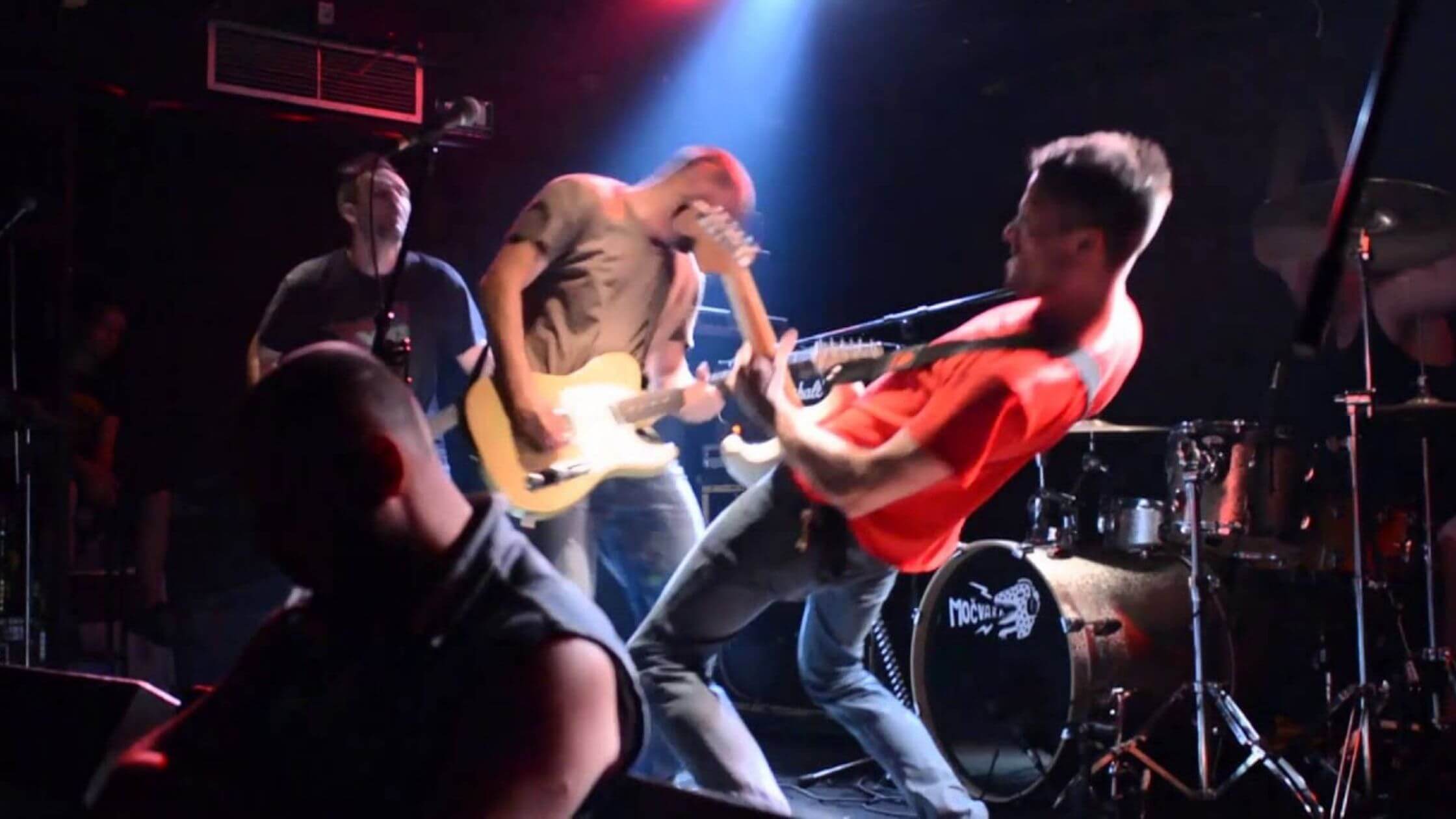
Image: mochvara.hr
6.00-9.00 a.m.
If you’ve finished a long night out or just want to get a quick coffee before wrapping up the day, you can always head back to the main square and stop back at Mala Kavana, or grab a slice of pizza at Fries Factory - the latter being a classic post-night out snack stop.
And there you have it, the best 24 hours spent in Zagreb, hopefully showing just how much the small capital has to offer - not just its history and culture, but also its people and way of living.
For more on travel in Croatia, follow TCN's dedicated page.
An Overview of Zagreb Summer Festivals: 5 Reasons You Should Visit in 2021
May 27, 2021 - Although Zagreb often gets overlooked in favour of some of the more famous Croatian summer destinations, the capital of Croatia deserves to be more than a brief stopover on your way to the coast. Here are the Zagreb summer festivals you don't want to miss in 2021.
Murtić100, May 25 - July 18
Marking the centenary of the birth of Edo Murtić, one of the most influential modernist painters in southeast Europe, the exhibition Murtić100, which will feature more than 200 Murtić's paintings, takes place at Home of Croatian Artists (colloquially known as Meštrović Pavillion). Meštrović Pavillion is open for visitors every day from 11 a.m. to 9 p.m.

Meštrović Pavillion (right) /Pixabay
European Short Story Festival, June 6 - June 11
This year marks the 20th anniversary of the European Short Story Festival (Croatian: Festival europske kratke priče - FEKP). To celebrate the occasion, this years' festival will also have two additional locations - Hvar Town on Hvar and the town of Vis on Vis. Holding the important title of one of the first short story festivals in Europe, European Short Story Festival thus far hosted more than 70 writers from 15 European countries and served as an inspiration for International Short Story Festival in Wroclaw, Poland. This year, the Festival will connect with authors from the other side of the pond - the internationally recognized Siri Hustvedt and Paul Auster. For more details, follow the Festival's official Facebook Page.

Pixabay
ZagrebDox, June 13 - June 20
This year's 17th edition of the International Documentary Film Festival ZagrebDox takes place at Zagreb Student Centre and Tuškanac Open Air Cinema. The programme is divided into 8 sections - State of Affairs, Controversial Dox, Masters of Dox, Teen Dox, Thriller Dox, and Love, along with two retrospective programmes - one dedicated to Croatian female documentary directors, the other to the Swiss theatre and film director Milo Rau. With 80 short and feature-length titles to choose from, ZagrebDox promises to give an overview of the finest works the documentary film world has to offer.

Pixabay
Grič Evenings, July 1 - July 15
Lovers of classical music are in for a treat! For a whole fortnight, starting July 1, just as the dusk begins to settle, Atrium of Klovićevi Dvori in Zagreb's Upper Town will be filled with the sounds of music commemorating the 40th Grič Evenings. We are looking forward to the programme announcement.
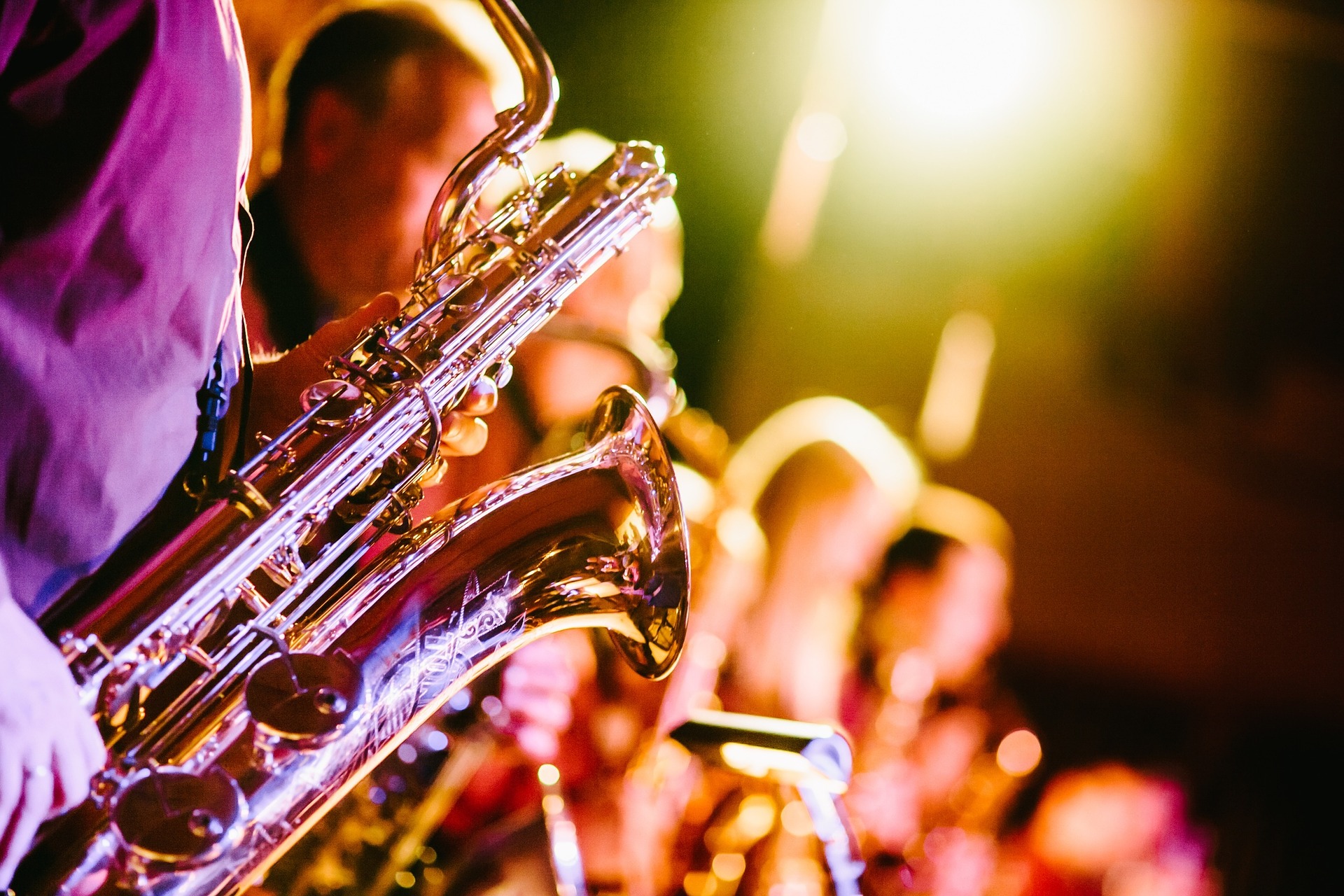
Pixabay
Croatian National Theatre Summer Evenings, May 29 - July 3
The Croatian National Theatre in Zagreb hosts an 'open-air' programme on the Republic of Croatia Square (Croatian: Trg Republike Hrvatske), right next to the Croatian National Theatre building.
The programme will open on May 29 with a concert to mark Statehood Day and Zagreb City Day, respectively. Visitors will get a chance to watch excerpts from some of the most famous operas such as Barber of Seville and The Marriage of Figaro, as well as the ballets The Swan's Lake and Giselle, the choreography of the latter having been developed by the champion of the Paris Opera Ballet, José Carlos Martínez.
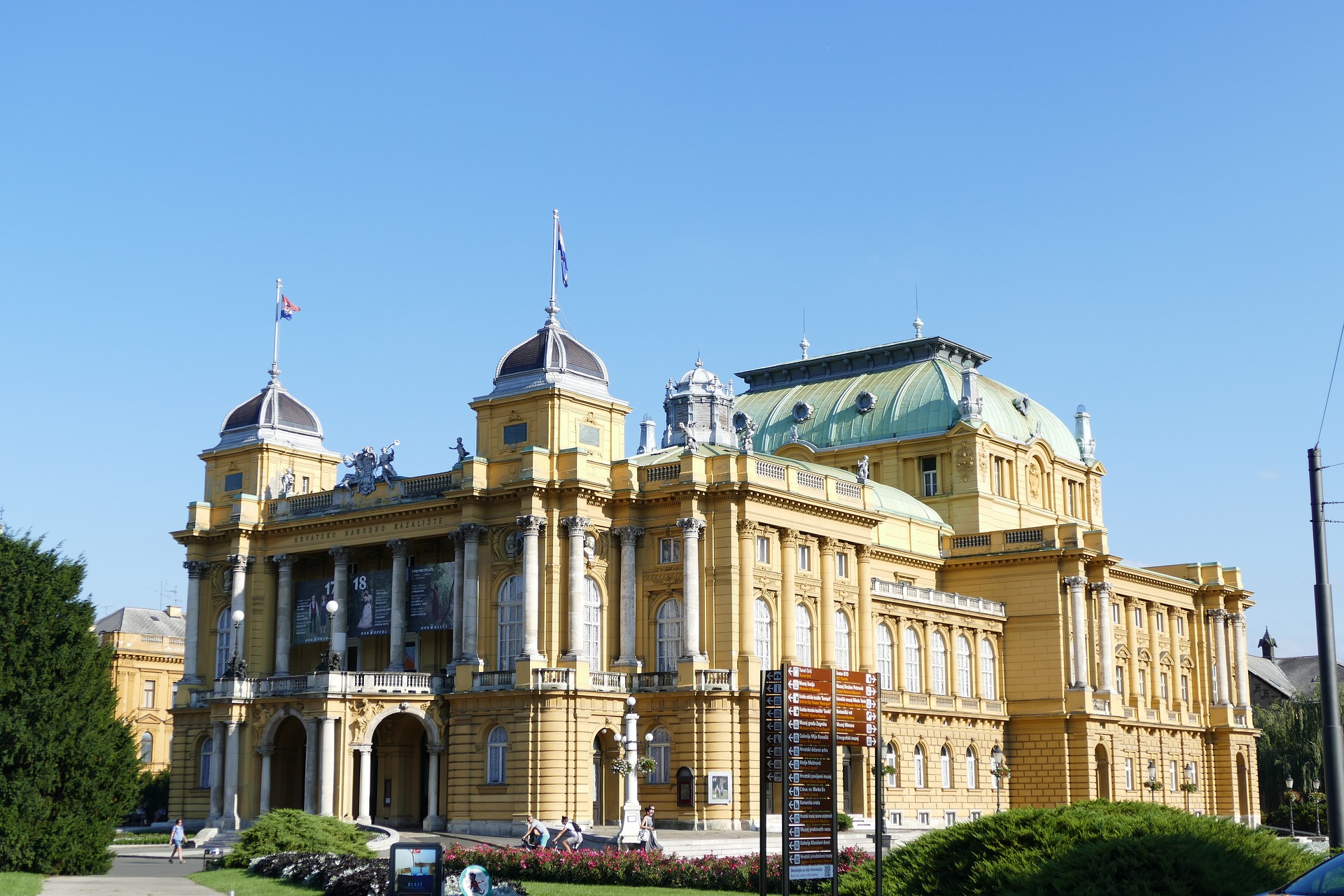
Croatian National Theatre/Pixabay
And there you have it - there are at least 5 reasons to extend your stay in Zagreb and discover its vibrant spirit!
For more on travel in Croatia, follow TCN's dedicated page.
Croatian Museums Planning Several Events for International Museum Day
May 14, 2021 - Croatian Museums will Celebrate International Museum Day on May 18th alongside their colleagues worldwide.
May 18th is International Museum Day. Croatian museums will participate as well. Not only that, but they need to get creative during this era of social distancing. As tportal reports, the theme of this year’s museum day is “The Future of Museums: Recover and Reimagine”. It is not difficult to see why this theme makes sense nowadays. Museums have had to struggle with the inability to work properly within the last year. COVID-related restrictions and lack of visitors took a toll on these institutions. Many will join this year’s celebration offering virtual tours of their exhibits, rather than live visits.
Zagreb Museums
To add insult to injury, many Zagreb museums also suffered earthquake damages during the last 12 months. This is why Ethnographic Museum is organising a two-day conference about museum collection storages. These are crucial for the preservation of museum material in unexpected situations.
On International Museum Day, the National Museum of Modern Art in Zagreb is offering free entrance to the exhibition entitled “Rafael – at the Outcome of a Myth”. Museum’s social media pages will also show a video where the members of the public will voice their opinions on the future of museums.
Croatian History Museum is currently closed for the public. Still, it is setting up a new exhibition entitled “Sword – once upon a time…”. This exhibition will open to visitors on the 19th of May.
If you are looking for something a bit different try the Croatian Naïve Art Museum. They are organising a tasting inspired by the museums' exhibits. Meanwhile, the Museum of Contemporary Art in Zagreb is staging mural painting events, among other things.
Rest of Croatia
Museum of Samobor is organising a children’s workshop called “Ferdionica”.
In Opatija, the Croatian Tourism Museum is staging an exhibition of photographs by renowned Croatian photographer Toso Dabac entitled “Opatija Album by Toso Dabac”.
The Museum of Brodsko Posavlje is having an exhibition of items collected in the city of Slavonski Brod and the area of Brodsko Posavlje. The idea behind this exhibition is to raise awareness among local people about the importance of collecting and preserving traditional items of a certain area.
Museum of Koprivnica organises a bicycle tour taking the visitors along an “art route” through the city, visiting points of interest.
Museum of Sibenik will see its experts presenting future projects by live Facebook video.
These are just some of the options for museum hungry visitors on May 18th. Where ever you find yourself in Croatia, make sure to check with local museums about their plans for International Museum Day.
For more on lifestyle, follow TCN's dedicated page.
Croatia Reopens Museums, Zagreb Earthquake Creates Limitations in Capital
As Sasa Paparella/Poslovni Dnevnik writes on the 1st of May, 2020, large European museums such as the Rijksmuseum, the Kunsthistorisches Museum in Vienna or the Stedelijk Museum in Amsterdam are losing between €100,000 and €600,000 a week because of the coronavirus pandemic. Croatia's museums are reopening their doors, but the Zagreb earthquake has left traces on those here in the capital...
As museums reopen across Croatia, only three museums in Zagreb opened their doors this week: the Museum of Contemporary Art (MSU), the Klovićevi Dvori Gallery and the Typhlological Museum. According to the Ministry of Culture, three more museums are expected to open on Tuesday, May the 5th: the Ethnographic Museum, the Technical Museum and Atelier Meštrović.
The recent Zagreb earthquake: There was no evacuation plan in place for the collections
In the recent Zagreb earthquake, several museums in the capital were badly damaged, and now it appears that there was no plan to evacuate their collections in place at all.
''The museums arrange evacuation of the building with their founders. In this regard, the Ministry of Culture is currently finding a solution for two museums - the Croatian History Museum and the Croatian Sports Museum - whose buildings have been marked in red, meaning it isn't possible for them to continue their operations without firstly thorough renovating the building. In addition to them, the Croatian School Museum also has a red mark on the building,'' reads a statement from the competent ministry, whose jurisdiction includes other museums which suffered damage as a result of the Zagreb earthquake.
The Zagreb earthquake also severely damaged several museums under the jurisdiction of the City of Zagreb: The Archaeological Museum, MUO, and the Croatian Museum of Natural History. Poslovni Dnevnik sent an inquiry to the City of Zagreb, but they're yet to receive an answer as to whether they had a plan in place for where the materials would be temporarily moved.
Most museums of national importance are located in Zagreb
Culture Minister Nina Obuljen Korzinek made a decision this week to implement a list of the damages caused by the Zagreb earthquake to museum materials. The damage list will be compiled by museum experts in coordination with the Museum Documentation Centre (MDC).
According to data from the MDC's Register of Museums, Galleries and Collections in the Republic of Croatia, in the City of Zagreb alone, there are 41 museums (which include displaced collections too) containing 3.5 million or 57 percent of all museum objects in Croatia in 615 museum collections.
According to the Museums Act, the deadline for completing the inventory and the entry of museum material and documentation in the Register of Cultural Property of the Republic of Croatia is December the 31st, 2020.
Back in the middle of December 2019, a mere few months before the Zagreb earthquake struck, a conference on the Protection of the Cultural Heritage of the City of Zagreb in Crisis was organised by the Office for Emergency Management. The presentation then concluded that "the investment funds provided by the museum's founders are insufficient for adequate preventive protection," and that "reconstructions mainly regard cosmetic modifications but not structural reinforcements."
According to data from the MDC website, as much as 40 percent of the museum and documentation materials of Zagreb's museums are still not inventoried, and only nine percent of the total number of museum objects have been digitised. Most museum buildings are historic and not purpose built, and in the 21st century, only the Museum of Contemporary Art has been purpose-built, which already lacked storage space.
Safeguards containing the largest number of items are housed in the basements or attics of (old) buildings in adverse microclimatic conditions, at risk of flood and sewage damage, as well as fire and damage to installations.
Clearly, there will be no speedy return back to normal...
Concerning the other, global problem which is affecting the museum profession, the MDC has published the results of the Network of European Museum Organisations (NEMO) study entitled: The Impact of COVID-19 on Museums in Europe and the World.
"According to the first results of this survey, which was being conducted until April the 17th, 2020 at 650 museums in 41 countries, it's clear that there will be no rapid return to normal," concluded the study, which included museums from all 27 EU member states and nine Council of Europe member states. Various museums from the US, the Philippines, Malaysia, French Polynesia and Iran also responded.
Most museums (92 percent) in Europe and around the world are closed due to measures to prevent the spread of the coronavirus infection. By closing their doors to visitors, many museums have already experienced, or will feel, a drastic loss of revenue. This is especially true of larger museums, as well as those in tourist zones that have reported a financial loss in the range of up to 80 percent of their normal revenue, which is increasing every week due to the complete blockage of any tourist activities, but also because of the possibility of continued restrictions in the summer.
Some museums will unfortunately close their doors permanently.
This means that 30 percent of museums are losing up to €1,000 a week, 25 percent of museums are losing up to €5,000 a week, 13 percent are losing up to €30,000 a week, and five percent of museums are losing more than €50,000 a week. As touched on previously, large museums, such as the Rijksmuseum, the Kunsthistorisches Museum in Vienna or the Stedelijk Museum in Amsterdam, are losing between €100,000 and up to €600,000 a week.
Private museums haven't provided any precise numerical data, but since most of their profits come directly from sales, some have already indicated that they lost their entire budget during their closure, and the fear is that the end result of the coronavirus crisis will be the permanent closure of their institutions.
For many of the closed museums, reopening dates haven't yet been solidly determined. Museums who have responded to the survey predict that they may open their doors to visitors no later than September 2020.
When it comes to other sources of revenue, the survey says many museums report that they have already accessed or will be accessing national funding programmes for this crisis situation. These programmes mostly include coverage of wage expenditures and lost income.
Museums from 12 countries report that discussions on crisis funding programmes for culture are ongoing, in eight countries such funds already exist, and museums from 15 countries state that there is currently no crisis funding programme operating in their countries. Such programmes vary from country to country - some applied exclusively to publicly funded institutions and some exclusively to freelance professions. Most museums still haven't needed to lay off staff. About 70 percent of museums report that they have modified their employees' tasks to meet the current needs, and 50 percent of museums said more than 80 percent of their employees are currently working from their homes.
More than 60 percent of museums have increased their online presence.
However, the situation is not the same for staff on part-time contracts, nor is it the same for volunteer programmes that have been completely suspended in most museums, the survey said.
More than 60 percent of museums have increased their online presence since they've been closed, while 13.4 percent have increased their budget with online activities. Most museums use social networks more than they did before, making use of hashtags and presenting individual items to their audience.
Additionally, the number of virtual tours and online exhibitions has increased. Of the museums that responded to the survey, 40 percent have noticed an increased number of online visits since they've been closed to the public. Of that percentage, 41 percent are seeing a weekly increase in visits to their sites by up to 20 percent, and 13 percent of them are seeing an increase of as much as 500 percent a week.
The most popular tools and platforms for the internal communication of museum staff working from home turned out to be Zoom or Skype for conference video calls, and for chat - Microsoft Teams and Whatsapp.
Two-thirds of museums have increased their activities on social networks, almost 80 percent of them use mostly Facebook, and almost 20 percent use Instagram as a platform. A large number of museums are considering increasing their activities in podcasts, live streaming and game creation.
Make sure to follow our lifestyle page for more.
Croatian Architect Releases Book: Andrija Mutnjaković
Famous Croatian Architect Andrija Mutnjaković will soon be ninety years old, and he is celebrating his birthday on November 29th. He has also published a new book, “Intentional Architecture”, which will be presented tonight at the Croatian Museum of Architecture at HAZU (Croatian Academy of Sciences and Arts) in Zagreb.
“A little girl wanted to take cookies off of my Kazalište Trešnja. That was my biggest compliment,” he recalls to Patricia Kiš/JutarnjiList on November 20, 2019.
The Narodna i univerzitetska biblioteka Kosova in Pristina, the Kazalište Trešnja in Zagreb, and the Turističko naselje Duga uvala in Puli are among the most famous buildings he has designed during his long career. He taught along with Žuža Jelinek in the 1950s and 1960s at the Radničko sveučilište in Zagreb; she taught fashion, he lectured about housing.
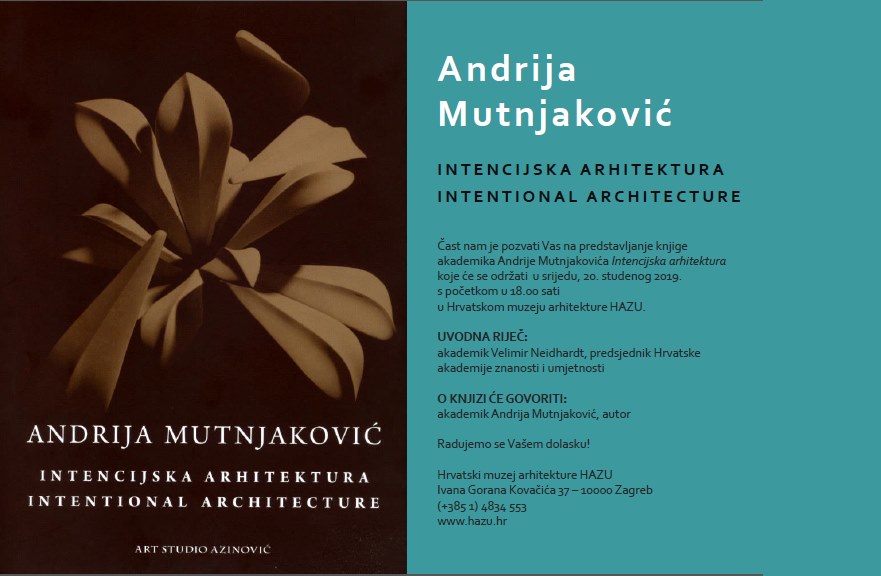
Domobil and Architect Andrija Mutnjaković's Book Event
The Flower
He worked with Alexander Srnec on the monument to Lenin in Belgrade, a project praised by Vera Horvat Pintarić. But he is most famous for his visionary, futuristic projects. Domobil, his most well-known, was a submission for an architectural competition in Hollywood. The project was conceived as a flower. The petals of this residential building open during the day and close by night, or when it rains.
This project also graces the cover of his new book. Why Domobil? "Because it was and remains my most famous project, which has been recognized as the most successful among the international public,” he replies. “For example, the Oxford Dictionary refers to this project as an example of kinetic architecture. I am the only Croatian architect mentioned along with Luciano Laurana, about whom I have written a book.”
“Recently, in September, I gave a postgraduate lecture at the University of Venice, where I spoke mostly about this project. Along with the lecture, I also wrote a text about why daisies are smarter than humans, to provoke the audience a little. The center of the daisy is life. Petals have nothing to do with life, they are simply a shroud which closes when it gets dark and when it rains. That's exactly what I wanted to achieve with Domobil."
Utopian Idea?
We ask our interlocutor whether this project, which was utopian at the time, could have been completed in the context of present-day architecture. "I don’t believe it was a utopian project at that time. It is a lightweight aluminum structure, like the wings of an airplane. I believed that it would be easier to build in Hollywood, where there are more people with financial resources, and that actors might have found this project attractive. At the time, they were making a lot of science-fiction films, and I believed that they would accept the project in this context as well,” he says.
Over time, he says, he has faced differing opinions regarding his architecture: “The students at Venice in my recent lecture were most impressed by Domobil. Some considered it utopian, though. I remembered one of my professors who, in commenting on my work, said to me: And an idle priest baptizes a flock. That is the principle behind my projects.” But that view is also supported by our most influential critic Vera Horvat Pintarić, and many others. "Yes, all of the art historians have supported me. But that was at a time when I hung out with actors and artists more frequently, they were more lifelike back then. When I started working there were only four architectural bureaus, and it was world of administrators. "
Have more people begun to engage in kinetic architecture over time? "Yes, over the past five or six years, ten books related to kinetic architecture have been published. In Croatian architecture, the first kinetic project had a roof which opened and closed and was designed by Josip Pičman in 1931. Even back then, they were thinking about kinetics. "
Secret to Croatian's Stamina
To the question whether Pičman was one of his inspirations for pursuing a career in architecture, our interlocutor responds. "I was also inspired by another colleague. One day we found a book about El Lissitzky's work at his father’s home. Osijek is city of town houses and there weren’t any major buildings. Flipping through the monographs, we marveled at human constructivism and magical design ideas. I was always interested in Konstantin Melnikov, and wrote an article about him recently, he had some amazing ideas,” Mutnjaković says.
So, soon he will be ninety years old. He speaks passionately about his new book, articles and his lecture in Italy. Is that why he's so full of energy, because he's been working in a profession which he has loved his entire life; is that his secret? "The secret is to drink brandy every night. Alcohol cleans out the fat, so I clean my veins every night."
Mutnjaković’s library in Pristina was on display at MOMA's New York exhibition about architecture of Yugoslav era, which was curated by Martino Stierli. Stierli, who is the Chief Curator of Architecture and Design at the famous American museum, has also been in Mutnjaković's studio, which is filled with books. "He saw a photo of the Kazalište Trešnjevka and said it was the most interesting building he had seen in Zagreb," he says.

The Kazalište Trešnja in Zagreb
The library once made the list of the ugliest buildings in the world, which was compiled by Centre Pompidou in Paris. On the other hand, at the 14th Venice Biennale, when the famous Rem Koolhaas was at the helm, they compiled about one hundred of the most important buildings over the past hundred years, each building representing one year. In 1982, his library was listed as the most important building. In any case, it is still one of the most controversial projects in Croatian architecture.
Information about Andrija Mutnjaković’s book launch on November 20, 2019 at HAZU in Zagreb can be found here.
To follow Croatian architecture and design news, check out our Made in Croatia page here and our Lifestyle page here.
Museums Outside of Museums: Exhibition on Zagreb Main Square
Museums outside of museums is an event opened yesterday at the Ban Jelačić square in Zagreb, which you will be able to visit during the next week. The idea behind this manifestation is to bring the museums even closer to the broader public, showcasing them on the Zagreb main square.
The project is the brainchild of the curators from the Natural History Museum Nediljka Prlj Šimić and Katarina Krizmanić and artist Nedjeljko Mikac, and their museum and Zagreb Tourist Board were in charge of organizing it at the square. The setup of the exhibition is that there's an wooden installation shaped like a giant bird's nest where seven of Zagreb's museums and one visiting museum will present their collections to the passers-by. Archaeological Museum, Museum of Arts and Crafts, Museum of Contemporary Art, Nikola Tesla Technical Museum, Ethographic Museum and Museum Documentation Centre and the visiting Radboa from Radoboj are participating this year. The event was organized last year for the first time, and attracted over twenty thousand visitors.
The biggest attraction of the exhibition this year is a replica of a dinosaur from Istria from the Theropoda family, which is believed to have walked the Earth 135 million years ago, as well as the models of fish and lizzards fossils from the ancient seas. The dinosaur replica was made by the sculptor Marin Marinić, helped by the paleontology experts. The Etnographic Museum presents their collection of head-covering items, titled "Hats Down!" Museum of Contemporary Arts created a program to mark the tenth anniversary of their move to their current, Novi Zagreb location, which shows more of the architecture of the building itself. Technical Museum Nikola Tesla created a program to mark the International Day of Letter Writing, showing some of the items that are usually not shown to the public, such as the automatic mechanic pencil.
Too bad that the extreme spring weather might bring down the number of visitors to the Museums outside of museums exhibition!
Zagreb 80's, Museum Dedicated to the Eighties, Recently Opens
In Zagreb, the Zagreb 80's Museum was recently open, with the idea to show the spirit of the time that was, over 30 years ago.
It's one apartment, a place where an imaginary ordinary Zagreb family would've lived in the eighties, and it's a kitchen, a living room, a study, a bedroom and a kid's playroom. The museum is the idea of two young Zagreb entrepreneurs, Anastazija Knežević and Ksenija Babić. The idea came to them during their travels, especially to Berlin where they saw the East Germany museum, but they wanted their museum to be different. So, Zagreb 80's museum is interactive, you can touch and feel any of the exhibits, to get more of a sense what life in the eighties felt like. You can listen to the cassettes and the vinyl records, you can drive the little Zastava 750 car (commonly called "Fićo"), you can play games on the Commodore computer, use the typewriter, see the footage from the Universiade games held in Zagreb in 1987.
There are, of course, old dishes in the kitchen, and a legendary Walkman with headphones. In the living room you can find the vinyl records, magazines, comic books and even a porn magazine popular back in the day, the Erotika.
There are around 500 exhibits in the museum, and all of them are authentic, in very good condition and functional. They collected those for over a year, from private collectors to the flea market, and they are still accepting donations from anyone who has something that might belong in the museum. People gladly donate stuff to the museum, as those are things that are left by their parents, they don't want to throw them away but they have no real value today - so a museum is a perfect place for them! Anyone who donates gets free entrance to the museum.
You can also organize your event at the museum, parties, promotions, shootings. In July the Zagreb 80's Museum goes to Shanghai to be presented there, so the entire current set-up of the museum will undergo massive change during June.
Museum is located in Zagreb centre, in Radićeva street, and entrance is 40 kuna for adults.



